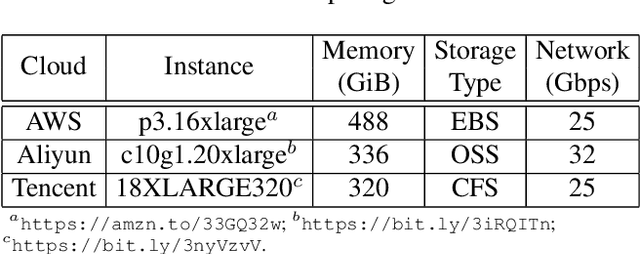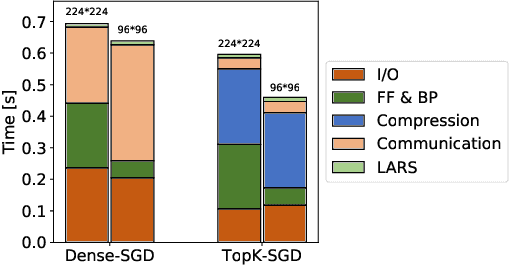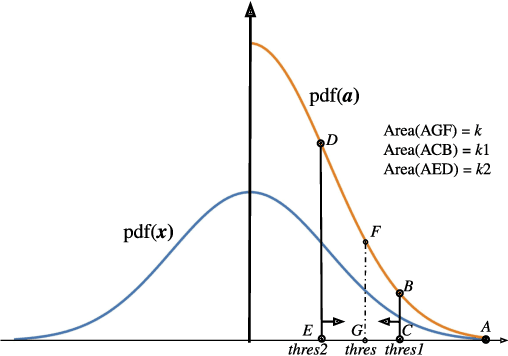Zilin Zhu
GLM-4.5: Agentic, Reasoning, and Coding (ARC) Foundation Models
Aug 08, 2025Abstract:We present GLM-4.5, an open-source Mixture-of-Experts (MoE) large language model with 355B total parameters and 32B activated parameters, featuring a hybrid reasoning method that supports both thinking and direct response modes. Through multi-stage training on 23T tokens and comprehensive post-training with expert model iteration and reinforcement learning, GLM-4.5 achieves strong performance across agentic, reasoning, and coding (ARC) tasks, scoring 70.1% on TAU-Bench, 91.0% on AIME 24, and 64.2% on SWE-bench Verified. With much fewer parameters than several competitors, GLM-4.5 ranks 3rd overall among all evaluated models and 2nd on agentic benchmarks. We release both GLM-4.5 (355B parameters) and a compact version, GLM-4.5-Air (106B parameters), to advance research in reasoning and agentic AI systems. Code, models, and more information are available at https://github.com/zai-org/GLM-4.5.
DiffCLIP: Leveraging Stable Diffusion for Language Grounded 3D Classification
May 25, 2023



Abstract:Large pre-trained models have had a significant impact on computer vision by enabling multi-modal learning, where the CLIP model has achieved impressive results in image classification, object detection, and semantic segmentation. However, the model's performance on 3D point cloud processing tasks is limited due to the domain gap between depth maps from 3D projection and training images of CLIP. This paper proposes DiffCLIP, a new pre-training framework that incorporates stable diffusion with ControlNet to minimize the domain gap in the visual branch. Additionally, a style-prompt generation module is introduced for few-shot tasks in the textual branch. Extensive experiments on the ModelNet10, ModelNet40, and ScanObjectNN datasets show that DiffCLIP has strong abilities for 3D understanding. By using stable diffusion and style-prompt generation, DiffCLIP achieves an accuracy of 43.2\% for zero-shot classification on OBJ\_BG of ScanObjectNN, which is state-of-the-art performance, and an accuracy of 80.6\% for zero-shot classification on ModelNet10, which is comparable to state-of-the-art performance.
WeLM: A Well-Read Pre-trained Language Model for Chinese
Oct 12, 2022



Abstract:Large Language Models pre-trained with self-supervised learning have demonstrated impressive zero-shot generalization capabilities on a wide spectrum of tasks. In this work, we present WeLM: a well-read pre-trained language model for Chinese that is able to seamlessly perform different types of tasks with zero or few-shot demonstrations. WeLM is trained with 10B parameters by "reading" a curated high-quality corpus covering a wide range of topics. We show that WeLM is equipped with broad knowledge on various domains and languages. On 18 monolingual (Chinese) tasks, WeLM can significantly outperform existing pre-trained models with similar sizes and match the performance of models up to 25 times larger. WeLM also exhibits strong capabilities in multi-lingual and code-switching understanding, outperforming existing multilingual language models pre-trained on 30 languages. Furthermore, We collected human-written prompts for a large set of supervised datasets in Chinese and fine-tuned WeLM with multi-prompted training. The resulting model can attain strong generalization on unseen types of tasks and outperform the unsupervised WeLM in zero-shot learning. Finally, we demonstrate that WeLM has basic skills at explaining and calibrating the decisions from itself, which can be promising directions for future research. Our models can be applied from https://welm.weixin.qq.com/docs/api/.
Towards Scalable Distributed Training of Deep Learning on Public Cloud Clusters
Oct 20, 2020



Abstract:Distributed training techniques have been widely deployed in large-scale deep neural networks (DNNs) training on dense-GPU clusters. However, on public cloud clusters, due to the moderate inter-connection bandwidth between instances, traditional state-of-the-art distributed training systems cannot scale well in training large-scale models. In this paper, we propose a new computing and communication efficient top-k sparsification communication library for distributed training. To further improve the system scalability, we optimize I/O by proposing a simple yet efficient multi-level data caching mechanism and optimize the update operation by introducing a novel parallel tensor operator. Experimental results on a 16-node Tencent Cloud cluster (each node with 8 Nvidia Tesla V100 GPUs) show that our system achieves 25%-40% faster than existing state-of-the-art systems on CNNs and Transformer. We finally break the record on DAWNBench on training ResNet-50 to 93% top-5 accuracy on ImageNet.
 Add to Chrome
Add to Chrome Add to Firefox
Add to Firefox Add to Edge
Add to Edge